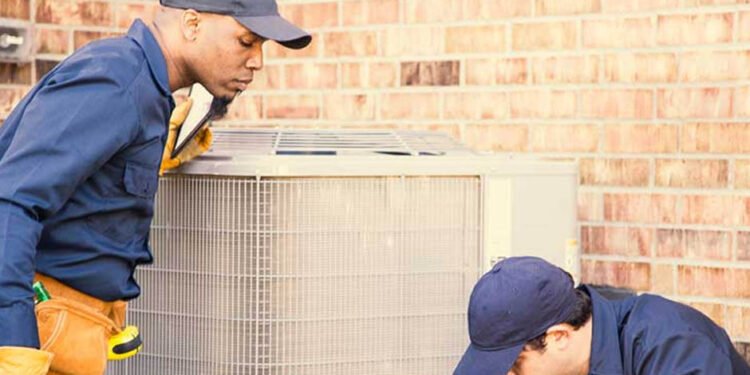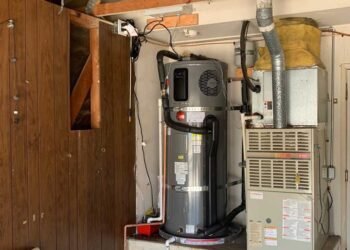Are you looking to install an air conditioning system in your home or office? AC installation is a tedious process that demands careful planning and execution to ensure optimal performance and energy efficiency, according to MHN Property Management. In this comprehensive guide, we will take you step-by-step through the AC installation process. Whether you are a seasoned handyamn or a first-time installer, this article will provide readers with valuable insights and tips to achieve a flawless AC setup. Let’s delve into the world of AC installation and learn how to install your system like a pro!
Assessing Your Needs and Requirements
Before diving into your AC installation project, it is essential to assess your needs and requirements. Consider factors such as the size of the area you want to cool, the number of people occupying the space, the local climate, and your budget. These considerations will help you determine the type and capacity of the AC system that best suits your needs. If you find yourself unsure, seeking guidance from a professional HVAC technician who can evaluate your requirements and provide expert recommendations would be highly beneficial.
Choosing the Right AC System
Selecting the appropriate AC system is crucial for achieving optimal comfort and energy efficiency, ensuring a relaxed and comfortable home environment throughout the Buford summer. Consider partnering with a qualified AC installation company in Buford for the best results. Various types of AC systems are available, including window units, split systems, central air conditioning, and ductless mini-split systems. Each type has its advantages and suitability for different scenarios. When making your choice, take into account factors such as your budget, available space, energy efficiency ratings, and noise levels. These considerations will guide you towards the AC system that best aligns with your installation requirements.
Calculating Cooling Load
Determining the cooling load is pivotal to ensure your AC system is appropriately sized. The cooling load refers to the amount of cooling capacity required to maintain a comfortable indoor temperature. Factors such as room size, insulation, windows, and heat-generating appliances impact the cooling load. Avoiding oversized or undersized AC systems is crucial, as they can lead to inefficient operation, higher energy consumption, and discomfort. To accurately calculate the cooling load, it is wise to consult an HVAC professional. They can perform a Manual J calculation, considering all relevant factors and provide you with the optimal cooling capacity for your specific space.
Gathering the Necessary Tools and Equipment
Prior to beginning the installation process, ensure that you have all the necessary tools and equipment at hand. This may include a drill, screwdrivers, wrenches, a level, pipe cutters, refrigerant gauges, and electrical testers. Additionally, don’t forget to equip yourself with the appropriate safety gear such as gloves, safety glasses, and a mask to ensure personal protection during the installation process. If you don’t have all of the necessary equipment, it is recommended to contact an AC installation company near you.
Planning the AC Installation
Proper planning is key to a seamless AC installation. Start by identifying the best location for the unit, taking into account airflow, maintenance access, and overall aesthetics. Plan the routing of refrigerant lines, electrical wiring, and condensate drains carefully. A detailed step-by-step installation plan, from mounting the unit to connecting all components, can save time and prevent costly mistakes. Consider partnering with professionals like Murray Air Conditioning and similar others, to ensure the installation is done efficiently and correctly, giving your system optimal performance and longevity.
Installation Process
Now let’s dive into the actual AC installation process. Although the specific steps may vary depending on the type of AC system you are installing, here is a general set of steps to follow…
- Install the mounting brackets or platform for the outdoor unit.
- Securely mount the outdoor unit on the brackets or platform.
- Connect the refrigerant lines, ensuring proper insulation and sealing.
- Route the electrical wiring from the indoor unit to the outdoor unit.
- Install the indoor unit, ensuring proper placement and secure mounting.
- Connect the refrigerant lines and electrical wiring to the indoor unit.
- Install the condensate drain line and ensure proper drainage.
- Test the system for refrigerant leaks and electrical connections.
- Make any necessary adjustments, and tighten all fittings.
- Connect the AC system to the power source and turn it on for testing.
Confused? Get Help From an AC Installation Company
Congratulations! You have successfully completed the AC installation process. By following this comprehensive guide, you can ensure a flawless setup that will provide you with reliable cooling and optimal energy efficiency.
Remember, if you are uncertain about any step or encounter difficulties during the installation, it is always best to seek professional assistance from an AC installation company near you. A certified HVAC technician can ensure that your AC system is installed correctly and performs at its best. Look for a reputable AC company in your area, ensuring that you’re getting the best possible care for your unit. Enjoy the comfort of your newly installed AC system and stay cool even on the hottest days!












